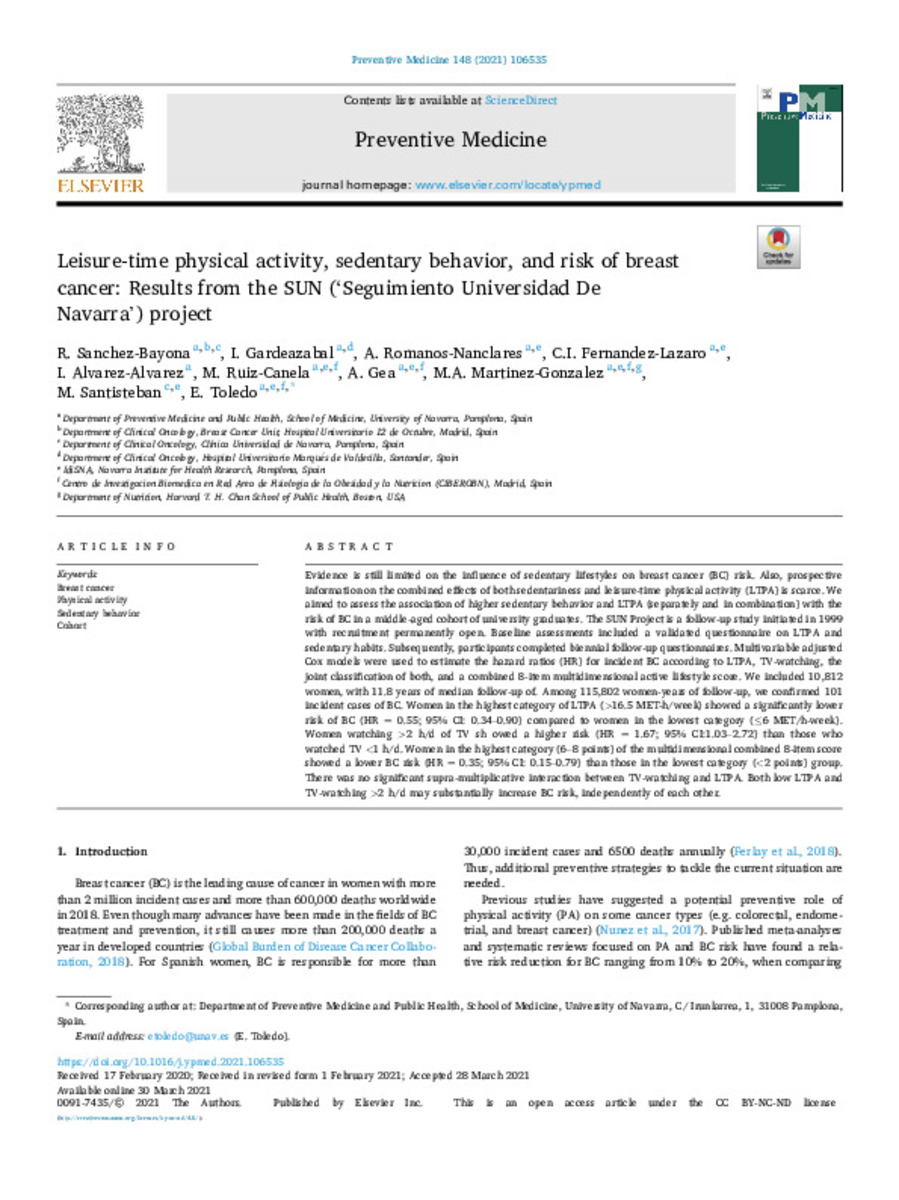Leisure-time physical activity, sedentary behavior, and risk of breast cancer: Results from the SUN (‘Seguimiento Universidad De Navarra’) project
Palabras clave :
Breast cancer
Physical activity
Sedentary behavior
Cohort
Fecha de publicación :
2021
Nota:
This is an open access article under the CC BY-NC-ND license
Cita:
Sanchez-Bayona, R. (Rodrigo); Gardeazabal, I. (Itziar); Romanos-Nanclares, A. (Andrea); et al. "Leisure-time physical activity, sedentary behavior, and risk of breast cancer: Results from the SUN (‘Seguimiento Universidad De Navarra’) project". Preventive Medicine. (148), 2021, 106535
Aparece en las colecciones:
Estadísticas e impacto
0 citas en

0 citas en

Los ítems de Dadun están protegidos por copyright, con todos los derechos reservados, a menos que se indique lo contrario.








